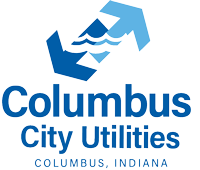There is a lot in the news these days concerning lead in drinking water and whether or not public water systems are being kept safe from this deadly contaminant. There have been high profile failures documented in some systems and current practices are being questioned in others.
As a customer of the Columbus City Utilities, you should be fully aware that your water is safe and exceeds all the requirements set forth by the U.S. Environmental Protection Agency (USEPA) and the Indiana Department of Environmental Management (IDEM), and these results were obtained using accurate and approved sampling and testing procedures.
For lead to be present in drinking water, there have to be two conditions met. Lead has to be present and available somewhere within the plumbing and the water had to have the proper chemistry to draw the metal out of the piping.

